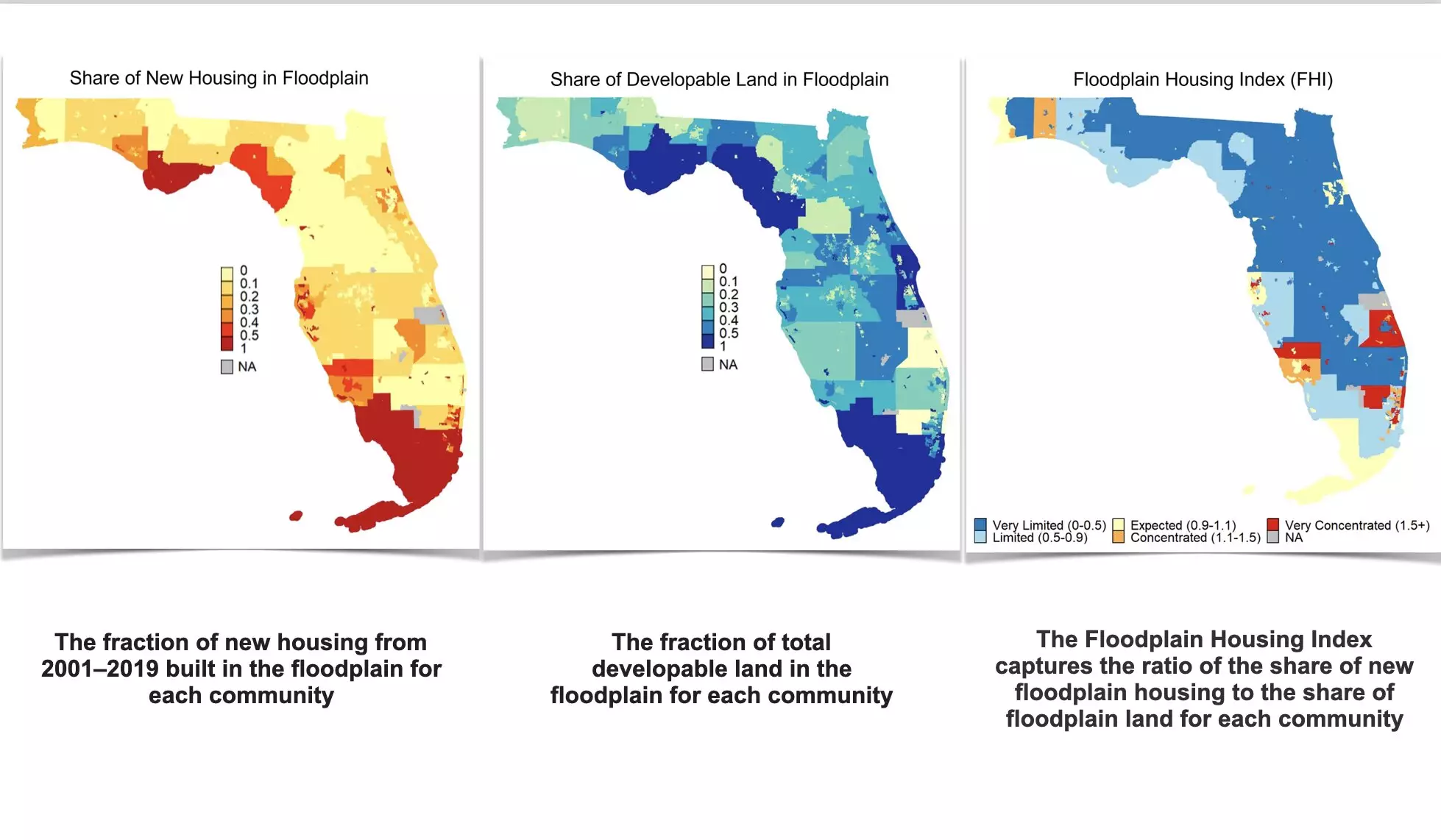Floodplain development has long been a contentious issue in urban planning, particularly in light of the increasing frequency and severity of floods due to climate change. A new study conducted by researchers at the University of Miami’s Rosenstiel School of Marine, Atmospheric, and Earth Science reveals alarming trends related to floodplain development across the United States. The study identifies over two million acres of floodplain that have been developed in the last two decades, with Florida being a particularly notable focal point. This analysis not only highlights the risks associated with such development but also prompts critical questions about regulatory practices and community preparedness in flood-prone areas.
The findings of the study, published in the journal Earth’s Future, paint a complex picture of housing development in flood-prone regions. The researchers combined diverse datasets—ranging from geospatial land use and impervious surface information to digitized floodplain maps—to assess the scale of new developments. Particularly concerning is the fact that Florida alone accounts for approximately 398,000 new residential properties built in floodplains, which constitutes an astonishing 21% of all new housing in the state. Despite the sheer number of new homes, the lead author Armen Agopian points out that these figures might seem surprisingly low compared to expectations based on the available floodplain area.
This contradiction raises an important question: Are regulatory frameworks effectively curbing overdevelopment in flood-prone zones, or are communities risking future disasters by permitting construction? The study reveals that although only 26% of communities across the U.S. have facilitated new development in floodplains, the implications of owning a home in these areas can lead to steep socioeconomic costs when disasters strike.
The study also makes an intriguing observation regarding the geographic distribution of floodplain housing. Coastal communities are found to concentrate new development in floodplains more than their inland counterparts, which poses a unique set of risks given that coastal areas are often more vulnerable to storm surges and sea-level rise. This raises issues not only regarding environmental sustainability but also social equity, as marginalized communities are often the ones most affected by flooding events yet are least consulted in planning processes.
Moreover, the analysis revealed a positive correlation between participation in FEMA’s Community Rating System (CRS) and floodplain development. While community enrollment in the CRS indicates an awareness of flood risks, participation alone does not guarantee effective flood management. Researchers emphasize the need for communities to not only enroll but also enhance their floodplain management practices to reduce development risks, demonstrating that proactive measures are essential for safeguarding vulnerable infrastructures.
Interestingly, the study sheds light on communities that have effectively avoided floodplain development altogether, often without major public recognition. These proactive measures serve as successful case studies that can inform policies across the nation, indicating a pathway to resilience that prioritizes long-term safety over short-term gain. As Katharine Mach, the senior author of the study, notes, the methodologies employed by these communities can offer vital insights. They embody a paradigmatic shift from reactive disaster recovery to proactive flood risk management—a lesson crucial for urban planners, policymakers, and local authorities.
The study’s findings reveal a pressing need to reconsider current land use policies and approaches to floodplain development, especially in light of changing climate patterns. Ongoing developments in flood-prone areas heighten risks not only for residents but also for local infrastructure and economies. Stakeholders must prioritize strategic planning and rigorous adherence to floodplain safety regulations to minimize the impact of future flooding events. In doing so, we can create resilient communities that learn from the missteps of the past while actively championing sustainable development practices that honor both natural ecosystems and human safety. Understanding and mitigating floodplain development is not merely a local concern but a national imperative that requires collective action and informed policies.


Leave a Reply